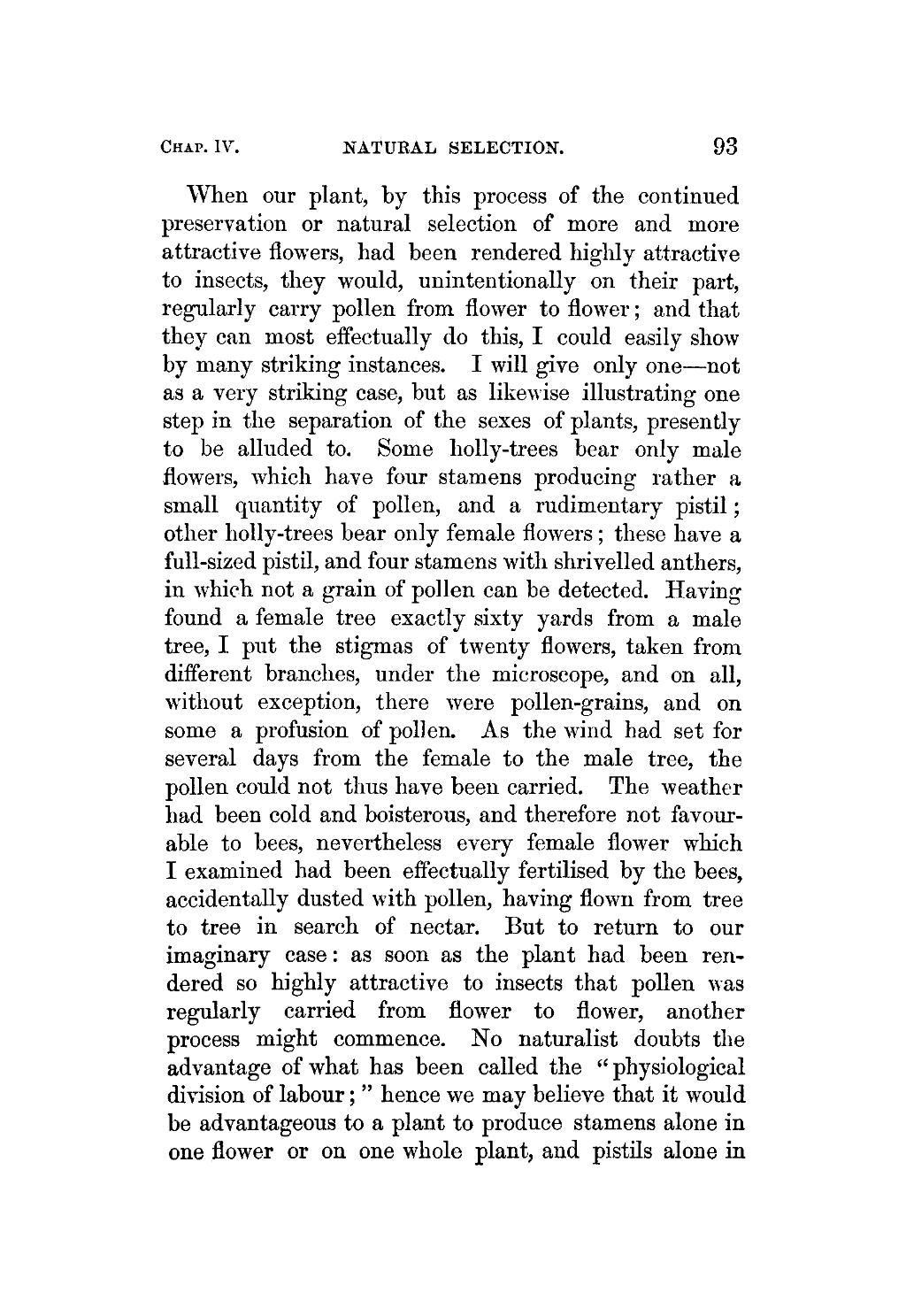When our plant, by this process of the continued preservation or natural selection of more and more attractive flowers, had been rendered highly attractive to insects, they would, unintentionally on their part, regularly carry pollen from flower to flower; and that they can most effectually do this, I could easily show by many striking instances. I will give only one—not as a very striking case, but as likewise illustrating one step in the separation of the sexes of plants, presently to be alluded to. Some holly-trees bear only male flowers, which have four stamens producing rather a small quantity of pollen, and a rudimentary pistil; other holly-trees bear only female flowers; these have a full-sized pistil, and four stamens with shrivelled anthers, in which not a grain of pollen can be detected. Having found a female tree exactly sixty yards from a male tree, I put the stigmas of twenty flowers, taken from different branches, under the microscope, and on all, without exception, there were pollen-grains, and on some a profusion of pollen. As the wind had set for several days from the female to the male tree, the pollen could not thus have been carried. The weather had been cold and boisterous, and therefore not favourable to bees, nevertheless every female flower which I examined had been effectually fertilised by the bees, accidentally dusted with pollen, having flown from tree to tree in search of nectar. But to return to our imaginary case: as soon as the plant had been rendered so highly attractive to insects that pollen was regularly carried from flower to flower, another process might commence. No naturalist doubts the advantage of what has been called the "physiological division of labour;" hence we may believe that it would be advantageous to a plant to produce stamens alone in one flower or on one whole plant, and pistils alone in
Page:Origin of Species 1859 facsimile.djvu/103
Appearance

